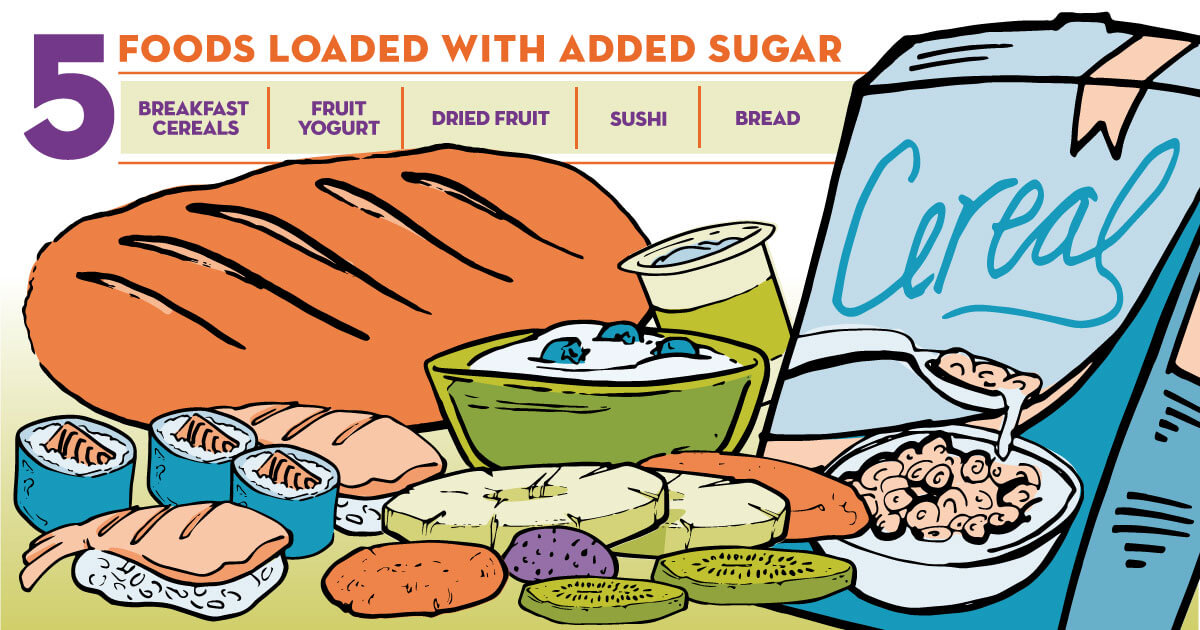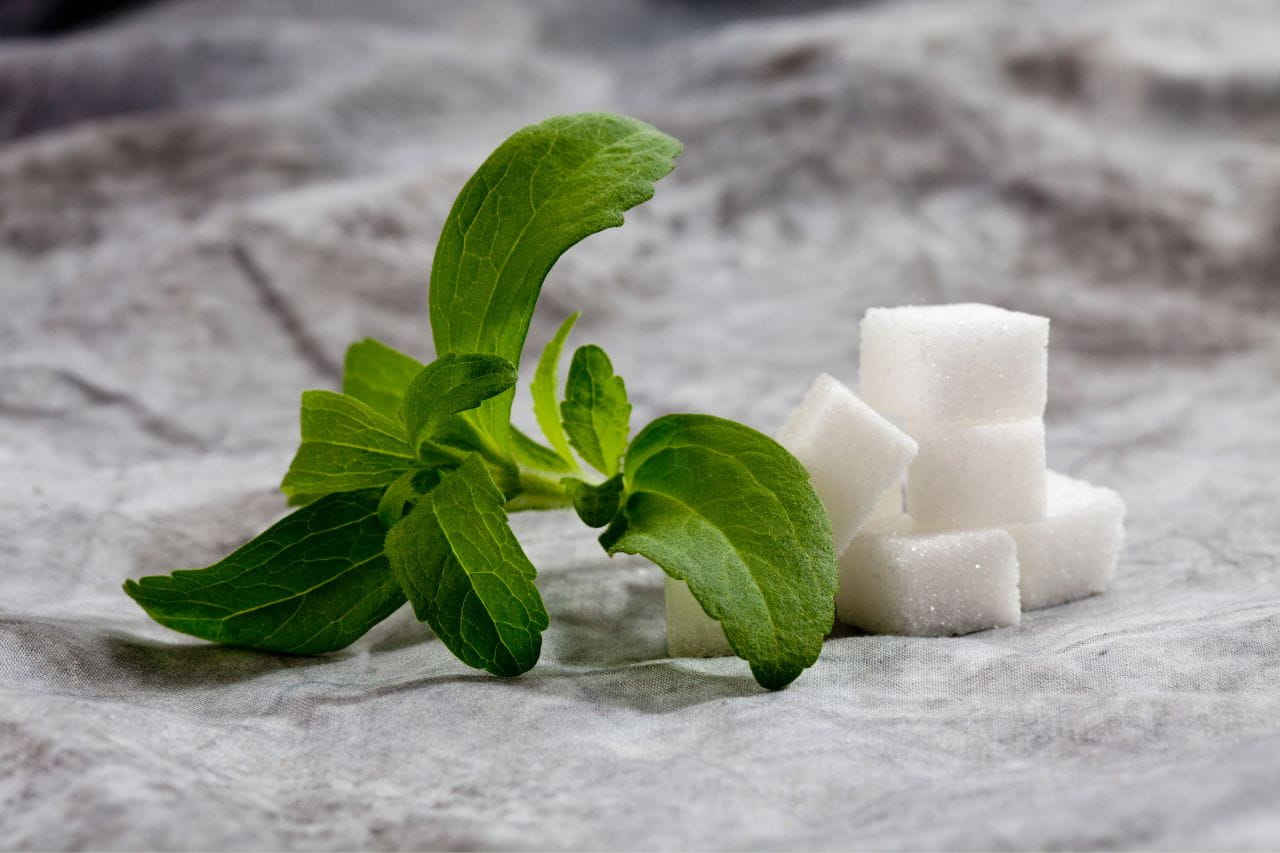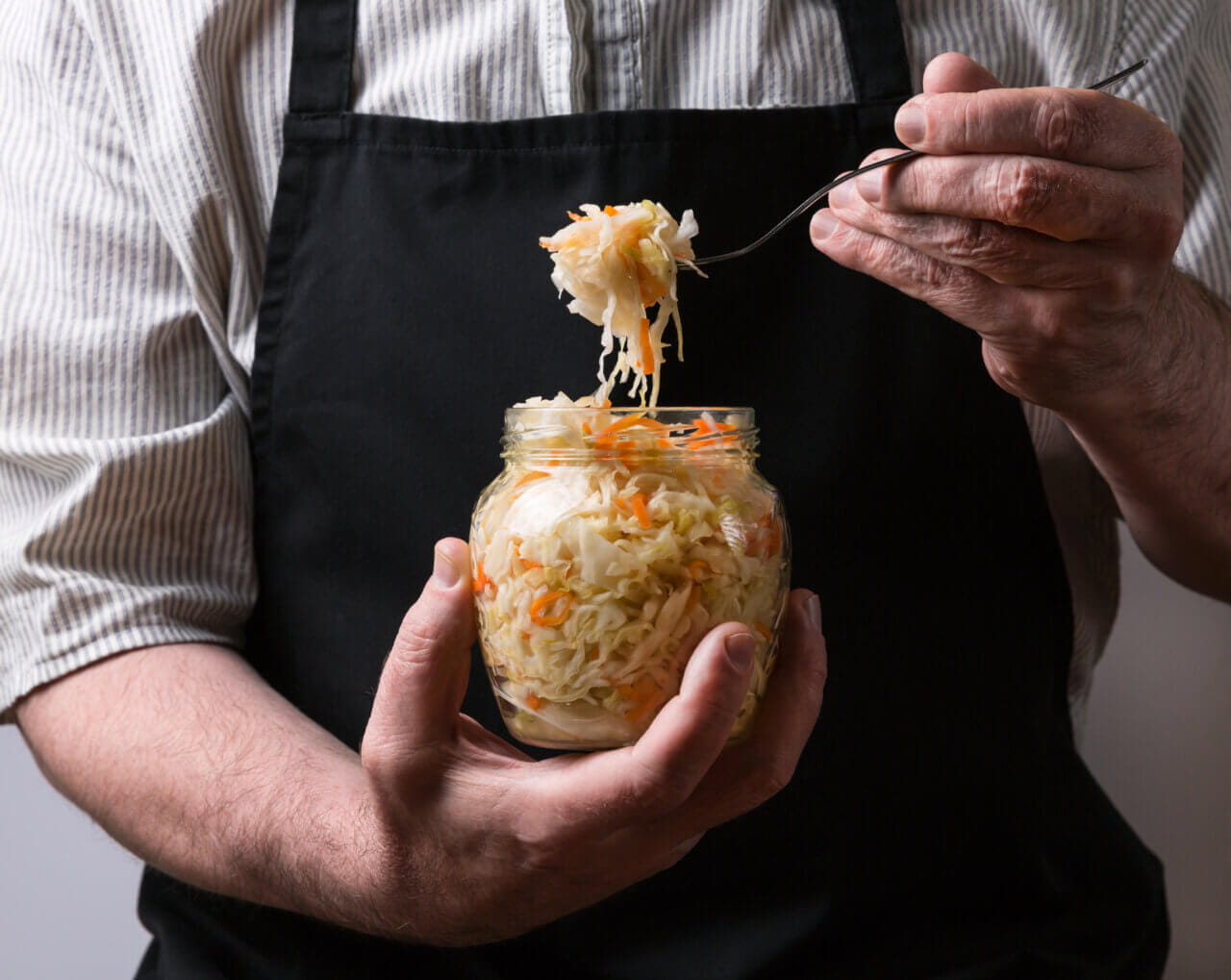5 Foods with added sugar

We all know that pastries, sodas and other sweets are jam-packed with sugar. But what about savory foods or packaged goods that have a “healthy” halo? You’d be surprised by just how much sugar is lurking in some of your favorite seemingly good-for-you snacks.
As a baseline, the American Heart Association (AHA) recommends that men consume 38 grams or fewer of sugar each day; that recommendation is 25 grams or fewer per day for women. To complicate the issue, in 2012 the Journal of the Academy of Nutrition and Dietetics reported that 74% of all packaged foods contain added sugar. That’s a big problem for the average American, especially because sugar can go by lots of different names, making it difficult to know if your food has added sugar or not. Common names for sugar include sucrose, high-fructose corn syrup, dextrose, saccharose, and maltose. As a good rule of thumb, if it ends in -ose, you can assume it’s sugar.
Here are five sugary culprits that you may want to reconsider including in your diet, as well as some alternatives that have a lower glycemic index.
Breakfast Cereals
Children’s cereals are notoriously sugary, but even “grown-up” cereals with supposed health benefits are loaded with the sweet stuff. Cereals and granolas marketed as health-conscious can contain upwards of 15 grams of sugar in just one cup.
Try instead: Muesli is typically lower in sugar and fat than other cereals. Or, you can make your own low-sugar or sugar-free granola. If you like hot cereals, rolled oats with fresh fruit make an excellent alternative to sugary cereals.
Fruit Yogurt
Yogurt naturally contains lactose (milk sugar). The sugar overload comes from the “fruit” that’s added. Those fruit-on-the-bottom packages aren’t fooling anyone; it’s not real fruit, it’s a fruit cocktail that’s chock-full of sugar.
Try instead: Go Greek! Greek yogurt has twice the protein and much less sugar than traditional yogurt.
Dried Fruit
Sure it sounds healthy, but some dried fruit is basically candy. While fruit is naturally sweet, dried fruit can also contain loads of added sugar. Always check the ingredients list to make sure there’s no sugar added in your dried fruit.
Try instead: If you can’t find no-sugar-added dried fruit near you, fresh fruit is just as good. You can even make your own dried fruit in your oven or with a food dehydrator.
Sushi
This may be the most surprising entry on the list. But the secret to perfect sushi rice is, you guessed it, added sugar. Cheap supermarket sushi is especially guilty of having high sugar content and low protein.
Try instead: Ask for brown rice sushi or opt for sashimi instead. You’ll get all the low-calorie great taste without the high sugar content.
Bread
White bread, as a highly processed food, is full of sugar; most breads contain high-fructose corn syrup. But multigrain and wheat breads can include caramel coloring and tons of added sugar — up to 16g in a single slice.
Try instead: Rye bread and spelt bread are low-sugar options to replace processed white bread and deceitful wheat breads.
Sugar is pervasive. It’s impossible to completely cut it out of your diet. But you need to make sure that the sugar you eat is coming from a healthy source, like fruit. (Most fruits contain fiber and antioxidants that prevent sugar spikes and insulin overproduction). But with a little knowledge and a lot of label checking, you can reduce the amount of added sugar in your diet with ease.




